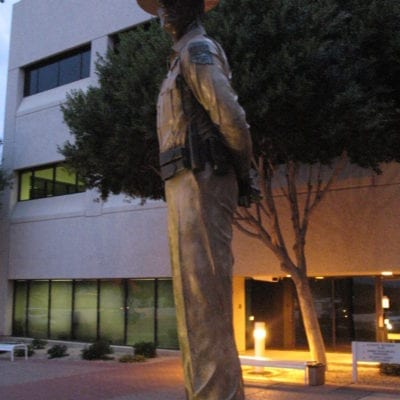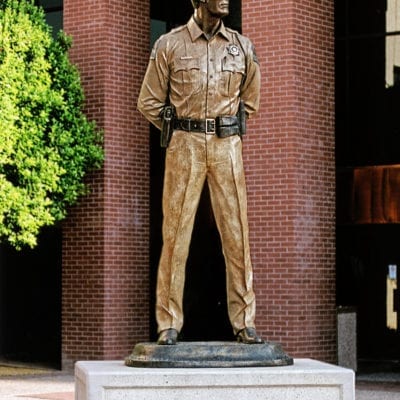Author: American Military University
By Robert Stresak, P1 Contributor
Today’s entry-level police officer must be better prepared emotionally, physically and technically to meet the herculean challenges of modern-day law enforcement and the often-unrealistic performance expectations we demand from officers. While these challenges and demands are drastically different from previous decades, training delivery methods in academies have remained relatively stagnant.
We should renovate the delivery of education in police academies to accomplish the following:
Improve the assimilation of skills and knowledge; More closely replicate the complexities of field situations; Reduce the hours required to complete basic training; Reduce the number of instructors used to deliver a complete basic course; Graduate recruits who perform better during field training officer programs (FTO); Shorten the time for officers to successfully complete FTO and probationary periods; Encourage police recruitment by providing a motivation to attend training that is relevant and easily understood and retained.
A look at today’s academy training format reveals that the traditional delivery of curricula and use of instructors falls short of these goals.
Traditional delivery of curricula
Academy curriculum is in constant change, but the delivery of curriculum has changed very little. Most curriculum changes consist of added (rarely deleted) curriculum. These additions are usually the product of:
Legislative mandates; Major incident biopsies that identified necessary training improvements; A percent of curricula additions that bloat academies and have little or nothing to do with the mission of basic training for entry-level employees.
Content in the last category falls into the “nice to know” vs the “need to know” category. For example, California academy recruits were once taught 19 stages of childbirth, consuming a considerable amount of expensive instructional and classroom time. Nice to know, but in exigent circumstances is it realistic for an officer to ask, “Ma’am, are you in stage 12 or 15?” In another example an entire class is tied up learning how to light a flare, again consuming valuable classroom time that could be used more expeditiously. These types of exercises can easily be deleted from the academy and transferred to field training where they can be taught in a few minutes by a competent training officer.
Curriculum topics (or learning domains) are arranged in what might appear to academy administrators to be a well-intended logical order of delivery to recruits. Barring instructor absences and scheduling conflicts, academies may be lucky enough to maintain a semblance of order for their classes. Even if administrators are fortunate enough to sustain this order, the question really becomes, given the arrangement of learning domains, how well does the student assimilate the intended knowledge? The obvious answer to find out is, of course, test. But is testing the retention of a singular topic always an effective evaluation of retention, especially when squared against the complexities of law enforcement incidents?
How instructional delivery can compromise learning
Instructional delivery also frequently follows tradition. Topics are delivered via a singular class presentation, taught over a period of hours or a series of days. Each topic – such as community relations, persons with disabilities, juvenile law or drug recognition – comprise only a fraction of the entire course, which in some states, can exceed 42 topics and 1100 hours of instruction. Using the 1100-hour example, each topic becomes x/1100 of the course (an 8-hour topic becomes 8/1100 of the course).
These “fractions” of the course are often delivered independent of other topics, especially of course, topics that have yet to be presented in class. A “tag team” of instructors – sometimes as many as 30 or more – present their topics in the basic course. These instructors come and go throughout the course, some as independent contractors, or adjunct instructors who are distanced from administrative coordination. Instructor A presents her topic over a period of hours. Then she leaves. Instructor B next enters the classroom, not really knowing what or how the previous topic was delivered and delivers his topic, perhaps unintentionally contradicting the previous instructor, or not effectively connecting the previous topic to theirs (without regular administrative oversight of all instructors how could they know what was taught before?). The class – the only constant in this process – possibly becomes the benefactor of confusing or contradictory information. Recruits frequently are tasked with connecting relevancy of each fragmented topic to the next subject, or worse, the relevancy to topics yet to be taught.
This process repeats 30 or 40 times more until all the “fractions” of the course add up to 100 percent. Then, if successful, we declare the student a graduate. There are unintended consequences to this format. Well-intended instructors can unknowingly fail weak students forward to the next class. But the glaring flaw in this process is that police work doesn’t occur in fractions. Nothing earth-shaking here, but every incident that requires a law enforcement response is an amalgam of many, if not all, subjects taught in the academy. Rarely do field incidents solely involve a singular component such as juvenile law, or only mental health. It is always a combination of officer safety, communication skills, substance abuse, domestic violence, EVOC, etc., potentially traversing the spectrum from Mayberry to mass destruction.
If that is the case, why isn’t academy curricula delivered as scenarios that replicate the reality of police work? It makes sense for academies to deliver a progressive series of scenario-based training that involve each recruit in experiential learning and assessment, providing building blocks that prepare for training involving even more complicated scenarios. It makes sense to employ a smaller cohort (as much as 50 percent fewer) of quality instructors that “travel” with students as they progress. The presence of fewer instructors would reduce contradiction, improve consistency and reduce efforts of well-intended instructors to fail students forward who may otherwise go unnoticed under traditional delivery formats.
Collectively, these traditions of academy delivery fail to maximize training that facilitates true learning. What about the impact on recruitment? Past practices suggest that the most effective recruitment efforts are made by those who have already become police officers. Is it possible that officers who complete a new training format would encourage candidates to apply to law enforcement positions and possibly reduce recruitment efforts of law enforcement agencies?
6 steps to changing the way we deliver academy education
Change in academy delivery is feasible. It takes work and requires a significant amount of planning to accomplish. Here are six steps to start that process:
- Curriculum design must be carefully planned and correlated with learning objectives keeping officer safety and community needs as paramount building blocks; Content “bloat” must be carefully assessed to determine if it is need-to-know versus nice-to-know content for entry-level training and whether it could either be eliminated or redirected to field training programs; Instructor quality standards must be established (comprehensive curriculum becomes mediocre if delivered by mediocre instruction); Testing components must be correlated to learning objectives; Field training programs ultimately become affected by curriculum changes, so we should introduce FTOs to both academy curriculum and recruits to further enhance the educational experience; Top-down organizational training for agencies affected by academy changes.
Change is already underway
In California, two academies assisted by the California Commission on Peace Officer Standards and Training (POST) have reconfigured their delivery system to reflect realistic, experiential-learning-based basic training. The Stanislaus County Sheriff’s Department and the Los Angeles Police Department are using reconfigured basic course delivery. Stanislaus County has reduced instructional time by approximately 200 hours using fewer instructors while improving performance in the FTO programs. Additionally, in the mid-1990s the California Commission on POST eliminated over 500 educational objectives from the mandated basic course.
It is my hope that this article will ignite dialogue among law enforcement and community leadership who seek to improve the basic training of entry-level law enforcement candidates.
About the author Robert Stresak retired as the executive director for the California Commission on Peace Officer Standards and Training (POST). He was responsible for the oversight of 39 POST-certified academies that delivered the state-mandated training standards for new police officers, and the development of secured testing procedures and protocols, background investigation standards, in-service training programs, the development and delivery of learning technologies, maintaining effective liaison with state legislative members, ensuring the timely development of legislatively mandated law enforcement training programs, ensuring the compliance of POST standards with approximately 600 law enforcement agencies within California, and maintaining an effective dialogue among chiefs, sheriffs, labor and managerial, and academic interests statewide.






